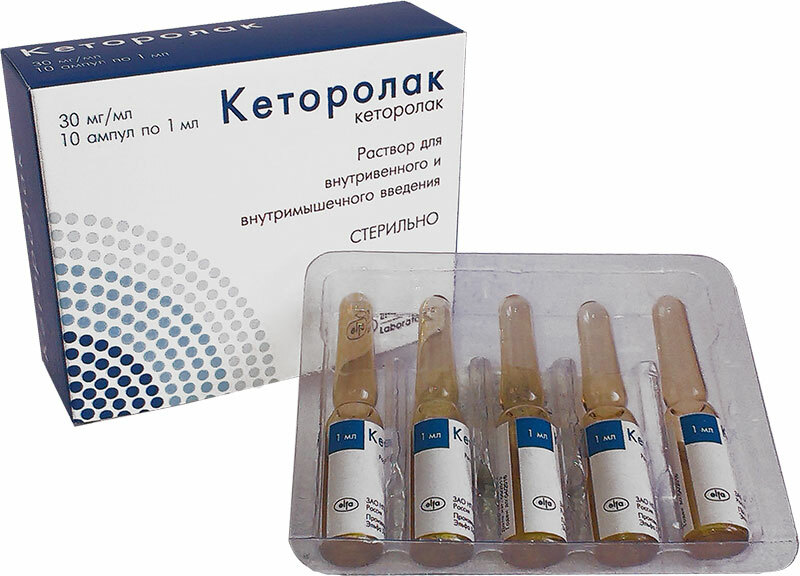Most often, pain in the joints( arthralgia) appears with age. This unpleasant symptom can be a sign of a serious illness or an independent ailment, so treatment should be directed primarily at eliminating the root cause of arthralgia, which can be determined with the help of medical examination and afterwards on pain relief. To reduce discomfort and inflammation, doctors prescribe NSAIDs and chondroprotectors, depending on the intensity of the pain, additional symptoms and individual characteristics of the patient. Preparations of these groups can alleviate the condition of the patient and improve the quality of his life. The most effective medicines will be discussed in this article.

Content:
- Joint pain agent which firm to choose
- Best NSAIDs for joint pain
- Best chondroprotectors for joint pain
- What joint joint paints to buy
Joint pain in which firm to choose
We have prepared a rating of pharmaceutical companies,which produce quality and effective medicines for the treatment of joint pain:
1. Farmak
2. Synthesis of
3. Sopharma
4. MUSTAFA NEVZAT
5. Nizhpharm
6. Rottafarm
7. Bayer
8. Berlin-Chemie AG
Best NSAIDs for pain in joints
Non-steroidal anti-inflammatory drugs are characterized by pronounced analgesic, antipyretic effects. This group of drugs is most often used for joint pain, becausethey quickly remove inflammation and other unpleasant symptoms.
Diclofenac Sodium

The drug gives a persistent therapeutic effect after 7-14 days of use. Principle of action: oppression of prostaglandin synthesis, which leads to a reduction in pain symptoms. The active ingredient is diclofenac. It acts in peripheral tissues. Indications: inflammation of joints and tissues, rheumatism, arthritis, sciatica, arthrosis, etc. Dosage form: suppositories, gel, tablets, capsules, injections.
Advantages:
- has a pronounced analgesic, moderate antipyretic effects;
- removes swelling of the joints;
- reduces pain and morning stiffness;
- lasting effect;
- quickly removes inflammation.
Disadvantages:
- for elderly patients should be used with caution. In this group of people, the following undesirable reactions occur more often: gastrointestinal bleeding, allergy;
- a lot of contraindications: kidney disease, liver, pregnancy, lactation, hypersensitivity, age under 6 years, etc.
Indomethacin

The drug has a pronounced anti-inflammatory effect a week after the application. The drug blocks the action of the enzyme that causes the inflammatory process. The active ingredient is indomethacin. It acts in peripheral tissues. Indication: arthritis, rheumatism, lor inflammation, inflammation of the uterus, bladder, toothache, etc. Dosage form: suppositories, tablets, ointment. Advantages:
- eliminates inflammation;
- facilitates the mobility of joints;
- removes heat;
- reduces erythema, swelling;
- dulls pain;
- interferes with the appearance of vascular thrombi, t.helps slow down the adhesion of platelets.
Disadvantages:
- prolonged use contributes to the destruction of cartilage tissue;
- can cause side effects: disruption of the digestive tract, nervous system;allergy;
- during the period of treatment is not recommended to engage in activities that require increased attention, becausethe medicine may cause weakness and dizziness.
Ketorolac

The drug is prescribed for intense pain. The medicine has a wide field of application, therefore sometimes it is used as a universal anesthetic. The active ingredient, trometamol, inhibits the synthesis of prostaglandins. Indications: severe and moderate pain after trauma, toothache, arthralgia, oncology, etc. Dosage form: gel, drops, solution, tablets.
Advantages:
- quickly removes inflammation and pain;
- antipyretic effect;
- different forms of release;
- affordable price;
- preparation is a strong universal anesthetic.
Disadvantages:
- high risk of bleeding, so the drug is not suitable for use in obstetric, surgical practice;
- can cause unwanted reactions: asthma attack, erosion of the gastrointestinal tract;
- you need a prescription from a doctor;
- is not suitable for the treatment of chronic pain and for long-term use( more than 7 days is not recommended), the effect of the medication is symptomatic, not medicated;
- has contraindications: gastric and intestinal ulcers, hemophilia, hypersensitivity, liver and kidney disease, age under 16, lactation, pregnancy.
Texman

The drug is used for strong, intense pain. The pronounced anti-inflammatory effect occurs after a week of use. The main difference from other drugs is the combined mechanism of action: the drug has an anesthetic effect at the level of the central nervous system and in inflammation, while Indomethacin and Diclofenac act in peripheral tissues. Indication: joint pain, inflammation of soft tissues, caused by trauma, myalgia, neuralgia, etc. Dosage form: gel, ointment, tablets, capsules.
Advantages:
- convenient form of release;
- is rapidly absorbed into the digestive tract;
- preparation is safe for prolonged use;
- relieves pain;
- reduces inflammation;
- removes swelling;
- improves the motor ability of joints.
Disadvantages:
- reduces blood flow in the kidneys;
- after application, gastrointestinal disorders may occur;
- is contraindicated in renal, hepatic insufficiency, pregnancy, lactation, allergy to drug components.
Dexalgin

This medication is one of the powerful anesthetic drugs of short duration( duration 4-6 hours).The active ingredient is dexketoprofen. Indications: inflammatory diseases of the musculoskeletal system of acute form, dental, joint pain, pain during menstruation. Dosage form: tablets, ampoules. Advantages:
- the effect of the application comes in half an hour;
- stops pain of different genesis, so it can be used as a universal pain medication;
- reduces temperature;
- relieves inflammation.
Disadvantages:
- after admission, there may be side effects: disruption of the gastrointestinal tract, heart, nervous system disorders( fear, anxiety, sleep disorders), allergies, disruption of the genitourinary system, etc.;
- is not intended for long-term use;
- a lot of contraindications: pregnancy, lactation, hypersensitivity, bronchial asthma, severe heart and liver diseases, etc.
The best chondroprotectors for joint pain
Joint joints also use chondroprotectors which in addition to anti-inflammatory and analgesic effect also protect and repair cartilage tissue. Medicines are characterized by a longer and safer effect from the use compared to NSAIDs, but to obtain results, it is often necessary to use them for at least 3 weeks.
Chondroxide

The drug supports and strengthens cartilaginous tissue. It is recommended to use in the early stages of arthralgia. The active ingredient is chondroitin sulfate. It is the building material for joints. The drug helps to retain fluid in the structure of the cartilage, which improves its cushioning. Also, the drug normalizes the production of intra-articular fluid, which improves the gliding of cartilage. Dosage form: gel, tablets, ointment. Advantages:
- has an antimicrobial, localizing effect;
- stimulates the production of interarticulate fluid;
- reduces pain intensity, swelling;
- slows down the deregulatory processes in the cartilaginous tissue;
- rarely show undesirable reactions;
- improves the mobility of joints;
- accelerates the regeneration of cartilage;
- slows the destruction of cartilage tissue, contributes to its recovery.
Disadvantages:
- high cost;
- gel and ointment for a long time are absorbed, leave stickiness;
- after application, allergic reactions may occur in the form of redness, rashes, itching of the skin;
- with caution taken during pregnancy, with lactation;
- to obtain a pronounced effect from the application, it is necessary to regularly apply the drug for at least 3 weeks.
Dona

The drug affects the processes of metabolism in the cartilage, compensating for the deficiency of glucosamine, a natural component of cartilaginous tissue. Indication: decreased motor activity of cartilage, joint pathology, osteoarthritis, etc. The drug slows down the destruction of cartilage tissue, restores its functions, improves elasticity. Product: ampoules, powder.
Advantages:
- is rapidly absorbed;
- normalizes the processes of calcium deposition in the cartilaginous tissue;
- retains the elasticity of the cartilage;
- is well tolerated, refers to safe drugs for the treatment of joints;
- stimulates the production of synovial fluid;
- reduces inflammation, swelling;
- relieves soreness.
Disadvantages:
- the overcharge;
- you need a prescription from your doctor;
- to obtain the effect of the application, it is necessary to undergo treatment for at least 3 weeks, so it is not suitable for those who want to quickly eliminate acute pain and inflammatory symptoms;
- contraindications: heart, kidney and liver disease, pregnancy, children under 12 years;
- can rarely appear nausea, flatulence, allergies, drowsiness, weakness.
Teraflex

This drug is one of the most popular for the treatment of joints. The medication is combined, becausein the composition contains several main components: glucosamine, chondroitin sulfate, so the drug has good efficacy and a lot of positive reviews. The mechanism of action of active substances is directed to the regeneration of cartilage tissue, by suppressing enzymes( collagenase, elastase) that destroy it. Indication: arthrosis of joints, osteochondrosis with moderate pain symptom. Dosage form: capsules, cream.
Advantages:
- prevents destruction of cartilage tissue, promotes its regeneration;
- is a mild anti-inflammatory, analgesic;
- improves the elasticity of the joints;
- stimulates the synthesis of hyaluronic acid;
- alleviates the unpleasant symptoms of osteoarthritis, so the need for NSAIDs decreases.
Disadvantages:
- so that the effect of application is noticeable, long-term treatment is necessary;
- has contraindications: severe kidney disease, pregnancy, lactation, hypersensitivity;
- rarely there are undesirable reactions: a violation of the gastrointestinal tract, loss of strength, tachycardia, allergies.
What remedy for joint pain is
1. The drug that doctors prescribe most often for pain in the joints is Diclofenac Sodium, becausethe medicine has a balanced, analgesic effect.
2. If severe pains are experienced, then Ketorolac can cope with them. The medicine refers to the potent.
3. A drug that will cope with inflammation - Indomethacin. The drug primarily has an anti-inflammatory effect, and then analgesic.
4. The combined effect of the application has Tenoxicam. In addition, the drug is approved for long-term use.
5. If you need a drug that not only reduces pain, but also increases joint mobility, it is better to purchase chondroxide. The medicine promotes the regeneration of the cartilaginous tissue, and also normalizes the metabolic processes in it.
6. A medicament that increases elasticity, replenishes the lack of glucosamine( a natural component of cartilage) and restores the function of the joints - Don.
7. Teraflex has a combined composition of the two main components: glucosamine and chondroitin sulfate, which makes the reception efficiency much higher.
8. If you need a powerful drug that will relieve pain in joints in half an hour and reduce inflammation, then it's better to buy Dexalgin.



